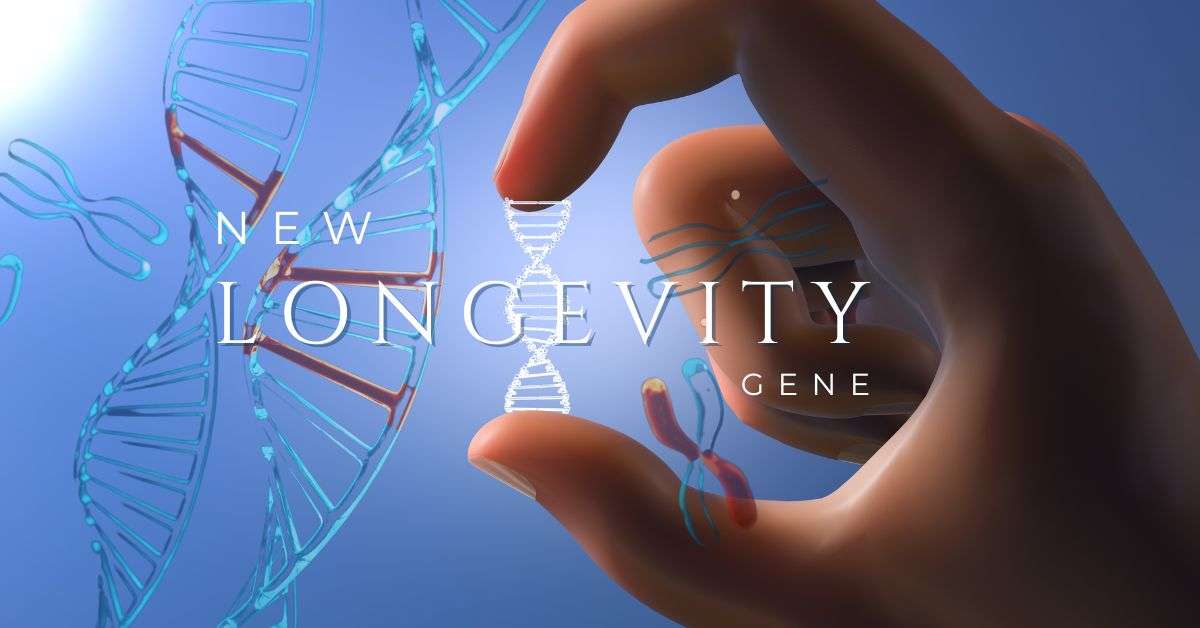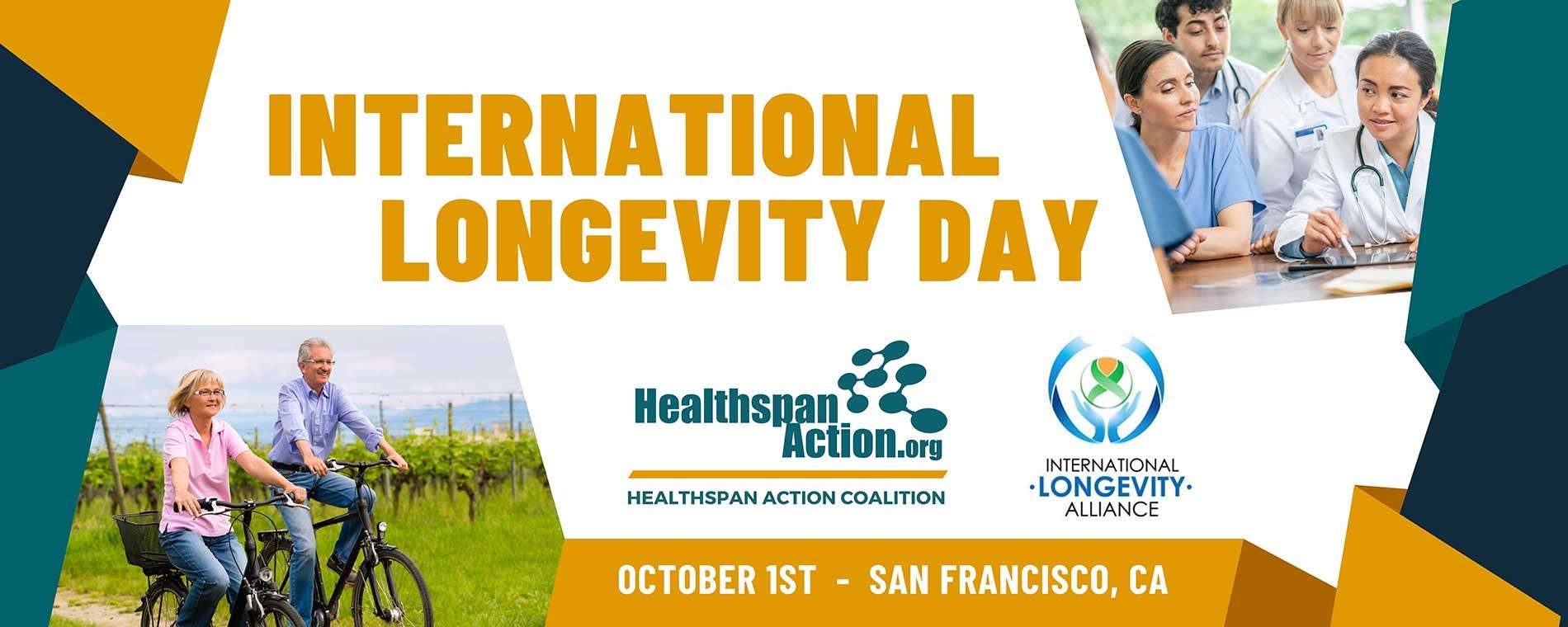From the Editor
Welcome to The Healthspan Compass, your 360-degree source for news from the healthspan and longevity ecosystem! In this issue, read the Healthspan Action Coalition’s response to a Congressional proposed framework for reorganization of the NIH (we had plenty to say), followed by news of an HSAC rally in San Francisco celebrating International Longevity Day (October 1). Follow that with news from The Commonwealth Fund, which reports on how the U.S. healthcare system stacks up against our international counterparts. Then have a good shot of developments in aging stem cells, longevity genes, GLP-1 drugs and aging. Chase that down with news of a new human trial testing the effect of rapamycin on ovarian aging and menopause.

Putting Healthspan at the Center: HSAC Responds to Proposal for Reorganizing the NIH
The Healthspan Action Coalition has called upon Congress to include healthspan considerations in every grant application to the National Institutes of Health. Responding to a call for comments from the House Energy and Commerce Committee on a proposed framework for reorganization of the NIH, which included replacing the National Institute on Aging with a new National Institute on Dementia. HSAC emphasized that there is much more to aging than neurological diseases like Alzheimer’s. The stated goal of the framework is to streamline the NIH by reducing redundancies and the formation of research silos. It recommends cutting the number of Institutes and Centers from 27 to 15, and establishing a “holistic life stage perspective” in biomedical research. In keeping with this goal, we called for explicit consideration in every grant application of how the proposed research would impact the healthspan, the establishment of collaborative regional research clusters to study the interrelated layers of healthspan science, plus recommendations for how AI could make the NIH more efficient. This is only a glimpse of the HSAC response; for details, peruse the summary of our letter and the complete letter on our website.
Help Us Celebrate International Longevity Day and Healthy Aging Month!
On October 1, International Longevity Day kicks off Healthy Aging Month across the world. If you’re in the San Francisco Bay area on Tuesday October 1, join us for a rally and celebration held at the heart of the city’s research and healthcare community. The event will take place from 11:30 – 2:00 pm at Spark Social San Francisco in the Alcoves, 601 Bay Boulevard North. HSAC’s co-founder and Chief Operations Officer, Melissa King, a longtime advocate for leading-edge science, will head up the celebration of science aimed at extending the healthspan. So round up your friends and colleagues who care about healthy aging, and join the celebration!

America’s Fragmented Sick-Care System Falls Short
Compared to nine other high-income countries, the U.S. healthcare system comes dead last on measures like life expectancy and chronic illnesses despite having the most expensive healthcare in the world. The Commonwealth Fund just released the report “Mirror, Mirror 2024: A Portrait of the Failing U.S. Health System,” and the findings are not reassuring for Americans struggling with access and affordability issues. “Americans are sicker, die younger and struggle to afford essential health care. We spend the most and get the least for our investment,” said Dr. Joseph Betancourt, president of The Commonwealth Fund. Most disconcerting is the incidence of chronic diseases and preventable deaths due to a lack of basic health care and preventative measures. As anyone who has ever had a health issue in the U.S. can attest, a major problem is the paperwork boondoggle of our private insurance system, something that consumes the time of physicians and often leaves patients out in the cold when drugs, treatments and procedures are denied coverage. The top three countries with the best health systems include Australia, The Netherlands and the United Kingdom. The major differences? These countries “spend their money on providing upfront support for their citizens,” said Dr. Georges Benjamin, executive director of the American Public Health Association. “We spend our money on sick care.”

New Light Shed on Stem Cell Aging
As we age, our bodies can struggle to maintain the delicate balance between stem cell depletion and over-proliferation. We need to continuously produce stem cells for tissue repair, which declines over the lifetime, but we also need to avoid out-of-control stem cell production, which is a feature of cancer. A Japanese team at the Riken Institute studying the production of stem cells in the intestinal lining of fruit flies, which share some common aging mechanisms with humans, has identified changes in chromosome structure and gene expression that lead to stem cell depletion. In a paper published in iScience, they report that blocking a gene called ced-6 leads to the depletion of stem cells in even young organisms. The finding raises the question of whether up-regulating ced-6 would stimulate the birth of new stem cells. This research is another brick in the edifice of research on the development of gene-based interventions aimed at promoting a lifelong healthy balance of stem cell replenishment without the risk of tumor development.

New Longevity Gene Identified
Neuroscience News reports that researchers at the Center for Healthy Aging, University of Copenhagen have identified a new longevity gene shared by numerous species, including humans. The protein, called OSER1, was found to play a critical role in regulating aging and extending longevity. The discovery was made when researchers examined a larger group of proteins controlled by the transcription factor FOXO, which is known as a “longevity regulatory hub.” Lead author of the study Zhiquan Li said that the discovery could lead to potential identification of other longevity genes as targets for drug therapies and other interventions.

The Gift That Keeps on Giving: GLP-1 Drugs and Aging
Just when we thought we’d learned everything we needed to know about GLP-1 agonist drugs like Wegovy and Zepbound, another study is released that reveals yet another one of the drugs’ potential benefits. This time, it involves a series of large studies led by Benjamin Scirica at Brigham and Women’s Hospital in Boston revealing evidence that Wegovy could delay aging. Harlan Krumholz of the Yale School of Medicine told the BBC that “Semaglutide [Wegovy] has far-reaching benefits beyond what we initially imagined…these are health promoters. It wouldn’t surprise me that improving people’s health this way actually slows down the aging process.” The studies involved 17,600 people over the age of 45 who did not have diabetes over three years. The startling result was that people taking semaglutide had a 19% lower death rate from all causes, including infectious diseases, over those given a placebo. GLP-1 agonists have already accrued a long list of benefits, including cardiovascular protections, a lower risk of dementia, lower death rates from Covid, help for arthritis and even the ability to quit smoking. All these things can add up to a longer healthspan, but stay tuned, because it’s not clear yet whether all the benefits are due to the drug independent of weight loss, or if weight loss alone would have the same benefits.

New Trial Investigates Rapamycin’s Effect on Menopause
It’s well known that after menopause, the risk of cardiovascular disease, dementia and osteoporosis surges. But what if menopause could be delayed? That’s the question being asked by physicians at New York-Presbyterian Hospital and Columbia University in a new trial that will examine whether a low dose of rapamycin, delivered weekly, could delay menopause by slowing the maturation and release of ovarian eggs. It’s already worked in mice, and even extended the animals’ reproductive ability by slowing the hallmarks of ovarian aging. Rapamycin has been tested widely for its anti-aging effects in animals, including the afore-mentioned mice, who also enjoyed an extended lifespan on the drug. Now we’re in the human testing phase, but one of the challenges of testing potential anti-aging agents in humans is that you normally need longitudinal studies that follow subjects over many years in order to determine how well they work. But Zev Williams, the lead scientist for the trial, said that this isn’t true in the case of ovarian aging; the number of immature eggs left in the ovaries, the measure of aging, can be accurately done using ultrasound. This shortens the time span considerably for when the ovaries can be tested to determine the effectiveness of drugs aimed at slowing aging. The pilot study is now recruiting subjects. “The opportunity to have a relatively simple, low-cost intervention that can actually improve quality of life and extend lifespan is just tremendous,” says Williams. In addition to its general health benefits, rapamycin could give women more reproductive freedom, but even if having children later in life is not the goal, the health benefits of delaying menopause are clear.
NOVEMBER 13-16, 2025
Healthspan Action Coalition Member
Endorsed Conference
Eudēmonia Summit
2025
November 13-16, 2025
At the Hilton in West Palm Beach
An unparalleled lineup of experts on the frontiers of health and longevity, a wide range of daily classes, workouts and treatments, and interactive exhibits from cutting-edge brands.
NOVEMBER 16-21, 2025
Healthspan Action Coalition Member
Endorsed Conference
Human Rights in the Amercicas Symposium
November 16-21, 2025
At Lakeside Village, University of Miami - 1280 Stanford Drive, Coral Gables, FL 33146
Melissa King will be attending
Healthspan Action Coalition is a proud sponsor of this event.





